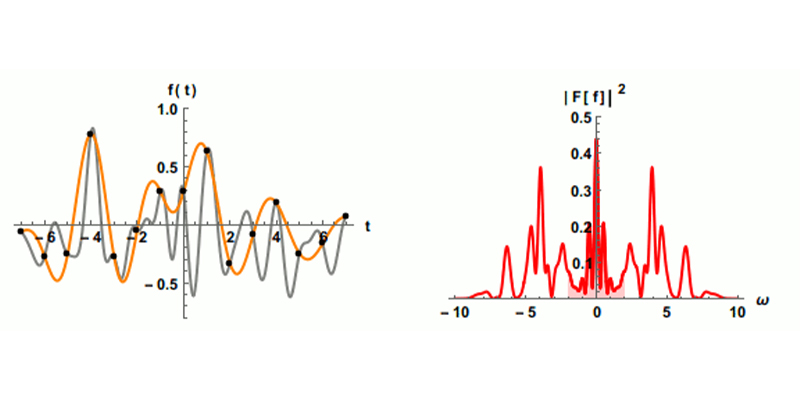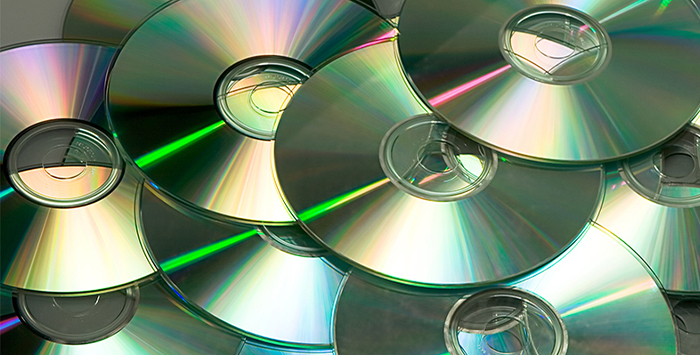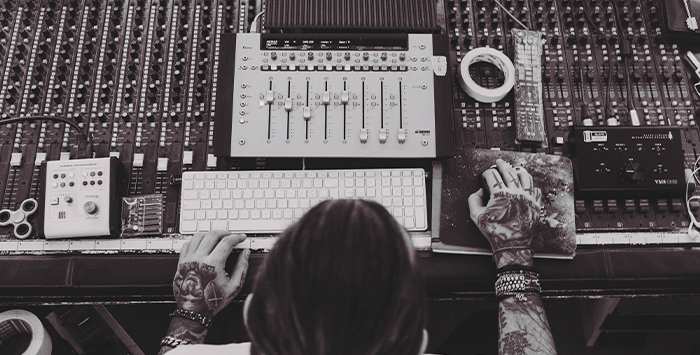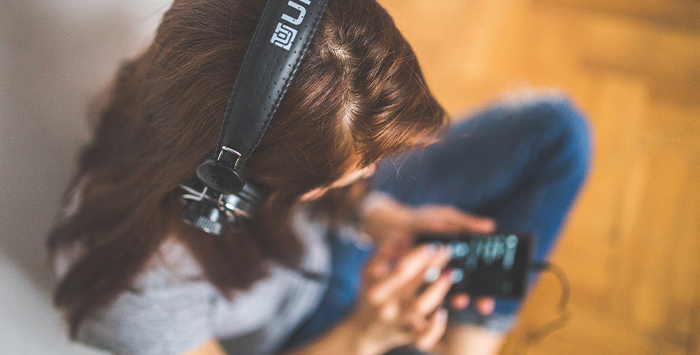Are you looking to improve the quality of your audio recordings? Or did you buy a new audio recording device that can record in 48 kHz? You might wonder if changing to 48 kHz is worth it when you’ve always recorded at 44.1 kHz. Will you hear differences? Will your music sound better?
Today, I'll answer the most common questions regarding sample rates, especially the difference between 44.1 kHz vs 48 kHz. Sample rate conversion is a crucial aspect of audio production that you should be familiar with, whether you're a musician, filmmaker, or audio engineer.
Let’s dive in!
What is a Sample Rate?
Sample rate is the number of samples an analog-to-digital audio converter takes from an analog signal per second. With these samples, the ADC can replicate the analog signal with more fidelity in a digital environment.
The sample rate is expressed in kilohertz, for example, 44.1 kHz and 48 kHz, which are the most popular for audio recording. These two sample rates take 44100 and 48000 samples from the analog audio signal and are related to the frequency range audio devices can record and playback.
According to the Nyquist theorem, the sample rate should be at least double the highest frequency in the analog signal to have enough information to accurately replicate the audio frequencies of the original sound source. The human hearing range ranges between 20 Hz and 20000 Hz (20 kHz). The peak is in our younger years and decreases as we age, but we still consider 20 kHz the highest frequency audible.

Using the human hearing range as a reference and following the Nyquist theorem, we now know we should capture double or more than 20000 samples per second, around 40000 samples minimum. Thus, capturing 44100 or 48000 are the two most popular options, even though modern audio interfaces can record up to 96 and 192 kHz.
The more samples you take, the more information in the audio signal you have to digitalize. Thus, a higher sample rate should provide a more trustworthy audio waveform with less distortion and aliasing, an issue that may occur when recording audio.
If you record using a sample rate below the Nyquist frequency range and there are higher frequencies, they could surface in the lower frequencies as artifacts and distortion, which is known as aliasing. Recording at higher sample rates can reduce the possibility of aliasing in our recording without resorting to a low pass filter that will affect your dynamic range.
Another solution could already be featured in your audio interface. Most audio recording equipment has a built-in low-pass and anti-aliasing filter to minimize the highest frequencies during recording and digital conversion.
Overall, the more audio samples you take from the original signal, the better audio conversion with higher resolution you'll get. However, it doesn't mean the recording will be of higher audio quality.
Here’s where questions arise. What’s the difference between 44.1 and 48 kHz? Is recording at higher sample rates worth it, and is there really an audible difference?
What's the Difference Between 44.1kHz vs 48kHz?
Let's discuss the differences between these two popular sample rates. Is a higher sample rate better?
There's not much difference between 44.1 and 48 kHz. Both are more than twice the highest frequency and provide good results.
There’s often a misunderstanding that the sample rate can affect the quality. Still, if the sample rate is twice or more than the highest audio frequency, you will get a good sample of the audio source in your digital audio workstation.
-
Main Differences

One of the main differences between 44.1 kHz and 48 kHz is the final format in which you are releasing your audio project. For music distribution on CD, 44.1 kHz has been the industry standard for decades because CD cannot playback at 48 kHz. Also, many music streaming platforms still use 44.1 kHz today. 48 kHz is considered the standard for video and digital video.
However, with the popularity of streaming services and improvements in audio recording devices, the 48 kHz sample rate has become more common in professional audio projects and music production, such as orchestration, film scoring, and audio design.
Editing is where you can find other differences, but not regarding audio quality. When you work with higher sample rates, some audio effects, such as time stretching, take advantage of it. But today, a few plug-ins can upsample an audio file internally without changing the original file.
Regarding workflow, working with a session of 48 kHz files can take more processing and space compared to one in 44.1 kHz, and your CPU power will be drained faster, slowing your plug-ins and effects.
One last difference is that any entry-level (or cheaper) audio interface will record at least at 44.1 kHz, so it's more accessible to work with this sample rate. But then again, working with cheaper audio equipment does impact sound quality, which is often then wrongly blamed on the sample rate. You should also consider the bit depth, but that's for another day.
-
Main Similarities
These two sample rates share many similarities. First, they're both higher than double the highest frequency in the human hearing range, which is enough for most audio projects.
Audio sampling at 44.1 kHz allows for frequencies up to 22.05 kHz, while 48 kHz will represent frequencies up to 24 kHz. This is a slight difference and is basically unnoticeable to the human ear.
The two sample rates are widely used in audio recordings for music production, dialogue, television, and digital video. Almost any audio interface can record in 44.1 and 48 kHz, and you won’t have much of a problem starting a session in your DAW with any of those sample rates.
Streaming platforms usually require your audio to be at 44.1 kHz minimum. Some may give you the option for 48 kHz, but it is not mandatory. So, you shouldn't have many issues unless you're producing CDs (as they don't support 48 kHz).
Pros and Cons of 44.1kHz
Let’s begin with the advantages of using a 44.1 kHz sample rate.
Standardization is huge. I mentioned that most streaming sites and music production studios still ask for your session mix at 44.1 kHz. Some will even downsample if you deliver your audio at 48 kHz. Working with 44.1 kHz from the beginning will ensure you comply with the standard requirements and reduce extra work in the final steps.
Another benefit is small files. A session at 44.1 kHz produces a smaller project size than a sample with a higher rate.
Working with this sample rate will make your workflow smoother as it won’t put much load on your CPU. This is even better if you work with older hardware and mid-range computers.
If you work with samples, it's more common to find audio samples at 44.1 kHz, so keep consistency in your project and avoid mixing with unnecessary sample rate conversions.
Now, regarding the disadvantages of recording at 44.1 kHz, let's cover a few shared by some music producers and audio engineers.
Lower sample rates increase the risk of aliasing. Recording at 44.1 kHz doesn't add aliasing, especially since you can work with anti-aliasing filters.
There might be hardware limitations for 48 kHz. For example, some MIDI controllers or production gear only support 48 kHz. Recording at a lower sample rate will require you to upscale your audio files and then downsample again to continue working. To avoid this back-and-forth conversion, it is best to record at the sample rate required for your gear.
Pros and Cons of 48kHz
Now, let’s talk about the advantages of recording and working with a sample rate of 48 kHz.
48000 Hz, which comes down to a frequency range of 24 kHz, records what's on our hearing range plus 4 kHz of extra headroom. It allows the anti-aliasing filter to reduce the chances of aliasing.
48 kHz is known to be the standard for audio in digital video. Recording at this sample rate ensures you can send your final mix without conversion or compressions.
Some plug-ins, effects, and audio manipulation tools can benefit from this extra frequency headroom, such as time stretching, pitch shifting, and granular synthesis. If you are a sound designer creating creatures, monsters, and unearthly voices, working with 48 kHz will give you that advantage.
Sampling at 48 kHz comes with disadvantages, too. Here are some things to consider before deciding.
You will require a bigger hard drive and more disk space because these files with more information will take up more room. Also, working with a lot of audio tracks at 48 kHz in your DAW session will demand more processing power from your computer, slowing down your plug-ins and workflow. Nobody likes crashes in the final steps of a project.
Compatibility can be an issue sometimes. If you work with other producers who record at different sample rates, you'll have to resample and do extra work. In this case, it would be better to have a discussion about these technicalities before you begin.
What Sample Rate To Use?

Most people will tell you the short answer is to stick to 44.1 kHz if you plan to produce a CD and record at 48 kHz for video, scoring, or sound design. This way, you'll be ready to deliver the final master using the industry-standard sample rate, avoiding last-minute resampling, conversions, and possible audio issues. And if you want to standardize your work, use 48 kHz and convert to 44.1 kHz if needed.
But sometimes, there are other things to consider beyond quality, aliasing, and the final mix. For instance, can the equipment that you have record at 48 kHz? Does the computer you use to edit and process audio have enough power and hard disk space to handle your 48 kHz session?
Why change if you've been recording at a sampling rate of 44.1 kHz with no issues and found no need to change to 48 kHz? In the end, most of the time, the decisive factor is your taste. Both rate's application is still the same for most audio projects.
Final Words

If you were worried about sound quality, now you should know that the audio sample rate is not a determinant factor. Quality is more affected by the bit depth, the quality of your audio interface, preamps, and microphones. However, recording at 44.1 kHz is the minimum sample rate I'd recommend if you work in the audio industry.
The difference between the two sampling rates is hardly noticeable when listening to the music, which will be mostly affected by the equipment you use to actually listen to it. Stick to what feels comfortable to you and makes your workflow faster, and keep an eye out for requests and requirements from your clients.
Good luck!



